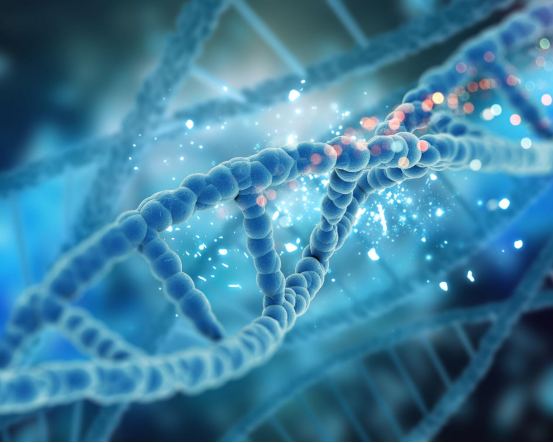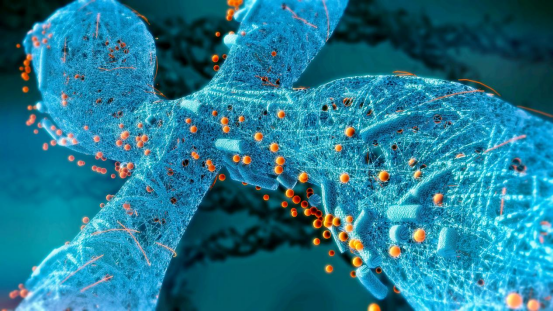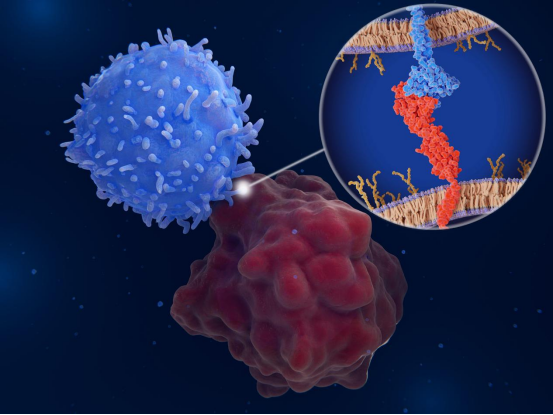科学文献
Telomerase is specifically expressed in most malignant tumors, which has attracted special attention to anti-telomerase therapy for tumors. It is envisioned that by targeting telomeres and telomerase, by inhibiting the telomerase activity of cancer cells or directly inhibiting the extension and stability of telomeres, cells cannot proliferate continuously, and then enter the aging path until death. At the same time, the difference between telomeres and telomerase in tumor cells and normal body tissues can reduce the toxic side effects of telomeres and telomerase inhibitors on the body. This article introduces the telomerase inhibitors developed by K2 Labs.
After in-depth research and exploration, the scientific research team of K2 Labs has successfully developed a new type of telomerase inhibitor. This inhibitor has been carefully designed and optimized to accurately attack the telomerase of cancer cells and effectively inhibit its activity, thereby achieving the purpose of treating cancer.
Compared with traditional anticancer drugs, this telomerase inhibitor has higher specificity and lower side effects. It can accurately identify and act on cancer cells, while having minimal impact on normal body tissues, thereby reducing possible toxic side effects during treatment. In addition, the inhibitor has a unique mechanism of action that can block the proliferation path of cancer cells, preventing them from continuing to grow and spread, bringing new hope to cancer patients.

New anti-tumor compound: telomerase inhibitor (all types of cancer)
After scientific research and verification, a telomerase inhibitor with both safety and effectiveness has been confirmed to be applicable to the treatment of various types of tumors. Due to the influence of genetic mutations, the growth and reproduction of tumor cells are often difficult to be effectively controlled, which may eventually threaten the patient's life. In the process of in-depth analysis of the biological characteristics of tumors, scientists have found that almost all types of tumors rely on telomerase to maintain their continuous and uncontrolled growth. This is because as tumor cells continue to divide, their telomeres will gradually shorten, thereby causing cell death. Telomerase is the key enzyme that maintains telomere length and prevents cell death due to telomere shortening.
In response to this discovery, if the MST-132 drug can effectively inhibit the activity of telomerase, it can curb the growth of tumors at the source and eventually induce tumor cells to apoptosis. This research result provides new possibilities and treatment strategies for the field of tumor treatment, and is expected to bring more effective treatment options to the majority of tumor patients. (MST-132 is the main component of telomerase inhibitors)

The role of telomerase in tumor cells
In the human body, the number of cell divisions is fixed and genetically determined. During normal life, the number of cell divisions varies from cell type to cell type, but is usually between 60 and 100.
Telomeres, as special structures at the ends of chromosomes, function similarly to the plastic ends of shoelaces, effectively preventing chromosome degradation and avoiding fusion between different chromosomes. The sequence of telomeres is usually "TTAGGG" and is repeated many times at the ends of chromosomes. During cell division, the telomeres of normal cells will gradually shorten. When shortened to a certain critical value, the cells will stop dividing and enter the aging stage.
For most tumors, they have the characteristics of rapid growth, division and metabolism in the body. To achieve this characteristic, tumor cells must ensure that telomeres are not gradually shortened during division. Tumor cells achieve this goal by activating telomerase activity. Telomerase consists of two parts: telomerase RNA (hTR) and telomerase reverse transcriptase (hTERT).
Telomerase has the ability to maintain or increase the length of telomere sequences, thereby increasing the number of cell divisions. In normal cells or tissues, telomerase is usually absent or inactive and is only activated during tumor progression. By extending the length of telomeres, telomerase ensures that tumor cells can continue to divide and grow.
If the activity of telomerase in tumor cells can be successfully inhibited, these cells will stop dividing due to shortened telomeres and eventually die. Given that various tumor cells rely on telomerase to maintain their growth and division, while most normal cells do not need this enzyme, telomerase inhibitors have shown their safety and effectiveness as a strategy for treating tumors.

How MST-132 works
MST-132 is a telomerase template antagonist that can inhibit the activity of telomerase. It can be made into complementary chains for various RNAs and used as probes or for specific targets to exert therapeutic effects. Most therapeutic oligonucleotide fragments are between 18 and 30 fragments in length. They bind to messenger RNA as antisense molecules, promote its degradation, and thus block the synthesis of specific proteins.
MST-132 does not work by this mechanism. Instead, it binds to the active region of hTR and blocks the catalytic activity of hTERT, so it belongs to the classic enzyme inhibitor. The active site of hTR is the template region that is complementary to the telomeric TTAGGG DNA. hTERT uses this template region to synthesize telomeres. By binding to the template region of hTR, MST-132 blocks the catalytic activity of telomerase.
The complex is not easily degraded in cells and binds more firmly to telomerase. MST-132 can inhibit purified telomerase at very low drug concentrations. This suggests that the drug will be different from other anti-cancer treatments and will have no or very few side effects on normal telomerase-negative tissues.
Because MST-132 is a molecular drug that directly acts on telomerase. The research results of K2 Labs have attracted widespread attention in the field of cancer treatment. Scientists generally believe that the development of this telomerase inhibitor has opened up a new path for cancer treatment and is expected to bring good news to many cancer patients. In the future, with the deepening of research and the continuous advancement of technology, this telomerase inhibitor is expected to play a greater role in clinical applications and make greater contributions to the fight against cancer.